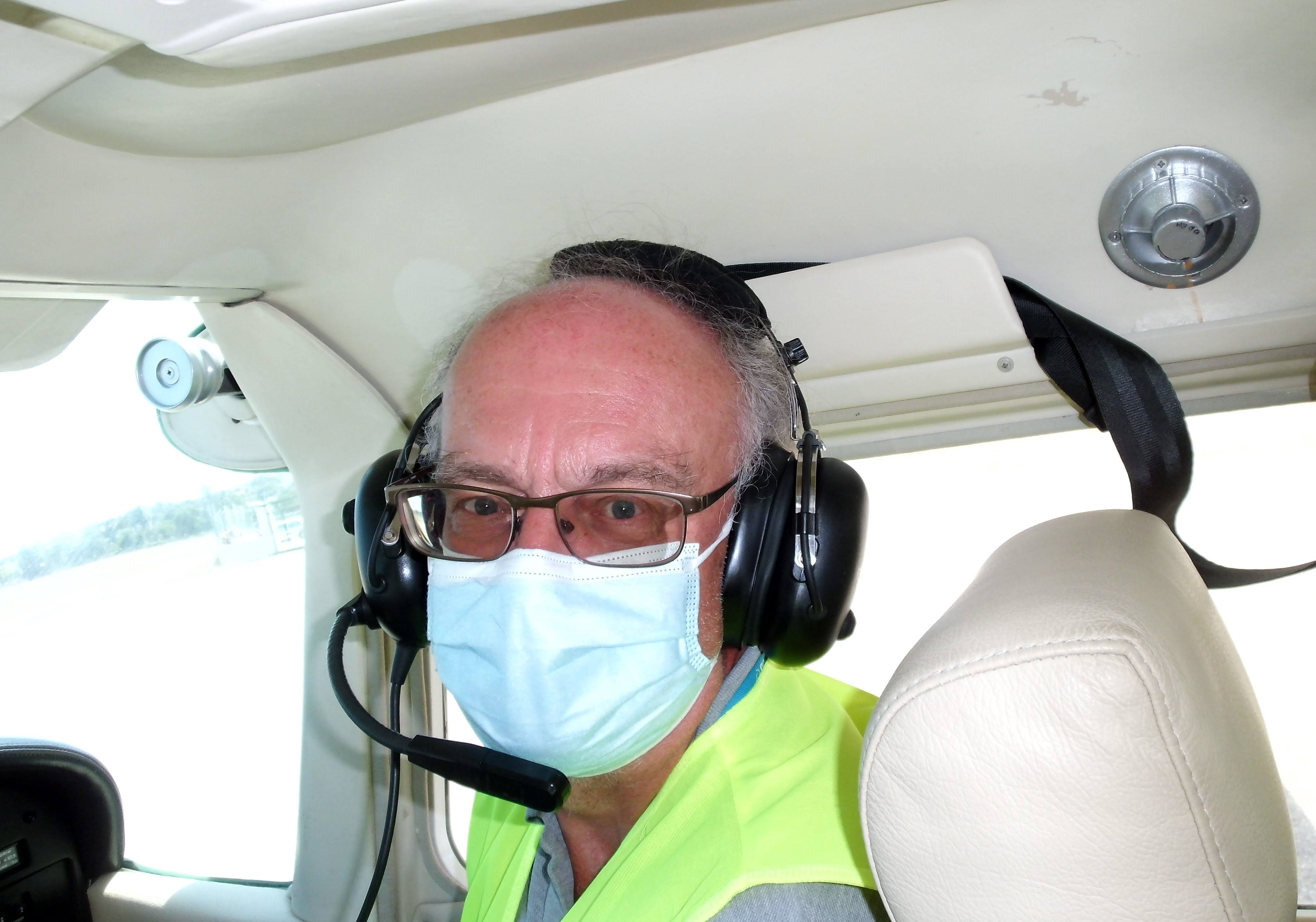Aviator
-
Gillan, John Woodburn
F/O John Woodburn Gillan DFC and bar, AFC 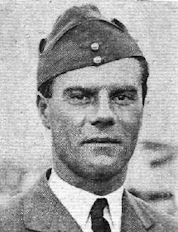
b c1907. From Edinburgh.
Established a world's land plane record in an RAF Hawker Hurricane on February 10, 1938; flying "blind", he covered the 327 miles from Edinburgh to London in 48 minutes, an average speed of 408.75mph. This feat earned him the nickname of 'Downwind Gillan'.
AFC in January 1939 as Sqn Ldr.
Killed in WWII: 29th August 1941, when a Wing Commander (pilot) RAF; buried Dunkirk.
-
Gilman, Harold Darwin
Harold Darwin Gilman 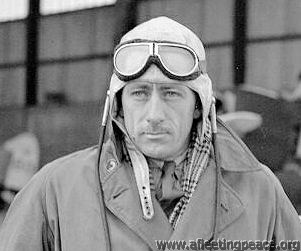
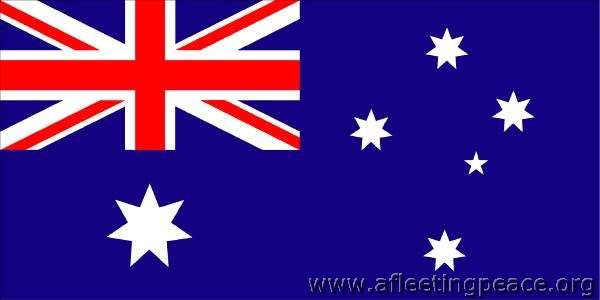 b. 29 April 1906 in Neutral Bay, Sydney
b. 29 April 1906 in Neutral Bay, SydneyDied on 23rd October 1934 in Italy (crashed during the MacRobertson Race), aged 28
"Flt. Lt. Gilman took his "A" in 1926 with the Auckland Aero Club. Shortly afterwards he joined the N.Z. Staff Corps and was sent to Aldershot in 1928 on attachment to the Suffolk Regiment. In 1929 he was transferred to the R.A.F. "Refreshed" at No. 2 F.T.S. (Digby), he was posted to No. 101 (Bomber) Sqd. at Andover, under Wing Com. F. H. Coleman, whose adjutant he remained until 1933. Gilman took part in all squadron experiments, including the high-precision bombing of H.M.S. Centurion. Last year, on conclusion of the annual Combined Exercises, he was sent as assistant adjutant to No. 600 (City of London) Sqd. under the late Sqd. Leader S. B. Collett. Finally, after brief attachment to the C.F.S. (Wittering), he was posted to the newly formed No. 15 (Bomber) Sqd. at Abingdon, of which he commands "B" Flight. His log-books show 1,560 hr.
Gilman has been granted special leave to accompany Baines in the race to Australia."
-
Gittins, John Moore
John Moore Gittins 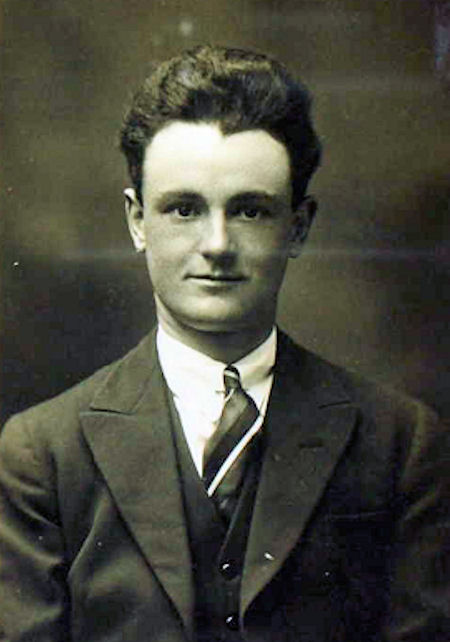 1928
1928Imperial Airways from 1929
b. Sutton, Surrey 11 Mar 1906
In 1932, lived at 26 St John's Grove, West Croydon, Surrey
-
Goodwin, Geoffrey
Mr Geoffrey Goodwin RAF Officer -
Gough, Fred
Mr Fred Gough 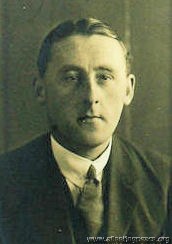
photo: 1927, aged 28
From Norwich, a 'cardboard and container manufacturer'. Joined the RFC as a private in 1916.
Manager of the Norfolk and Norwich Aero Club from 1927.
-
Gower, Pauline Mary de Peauly
Pauline Mary de Peauly Gower MBE 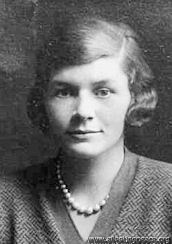 1930
1930b. 22nd July 1910 in Tunbridge Wells; younger daughter of Sir Robert Gower, M.P for Gillingham, Kent.
5 feet 5 in height, in case you wondered.
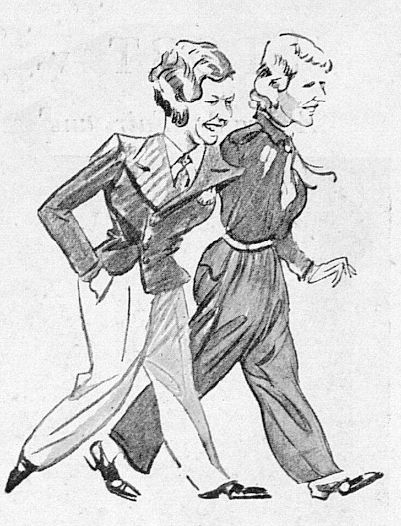
The Bystander Special Aviation Edition, 1933
"In England you can count on one hand the women who are making a living directly from flying. Probably foremost among them are the two girl flyers, Pauline Gower and Dorothy Spicer, who work in partnership at joy-riding. Miss Gower is the pilot and Miss Spicer the mechanic." - Amy Mollison, writing in 1934
"Pauline Gower, one of the few women who has already achieved a successful commercial flying career, did joyriding last year in 185 different towns with a travelling air circus." - Mary Bertha de Bunsen
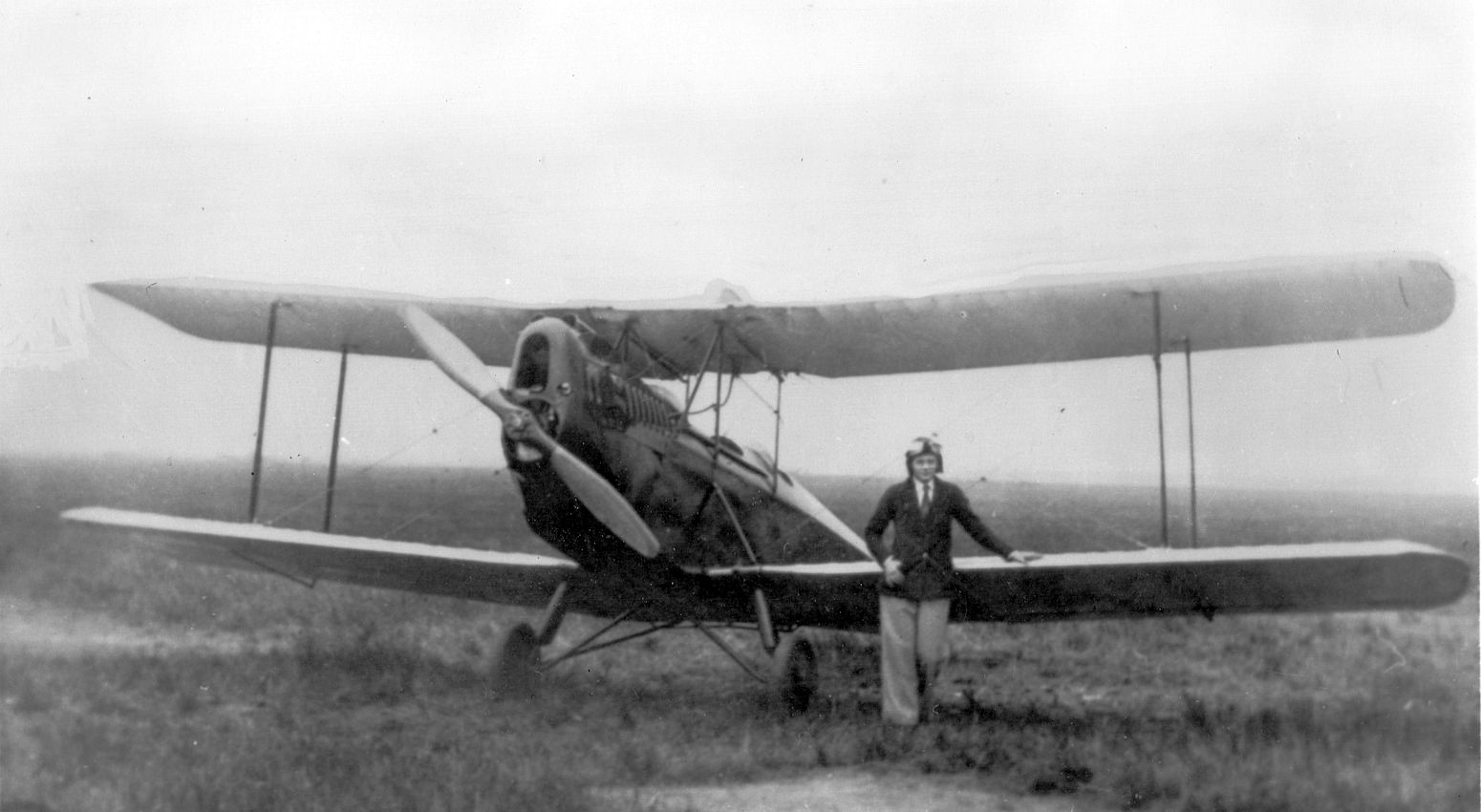 1932
1932She was fined £222 in 1933, having taxied her Spartan into a stationary Moth at Cardiff while giving joy-rides in an air pageant (although she reckoned it had definitely moved since she checked where it was). Three years later, she was taken to hospital suffering from concussion and 'lacerations of the scalp' after she... collided with another aeroplane on the ground, this time at Coventry airport.
During her air-taxi career, she was reckoned to have piloted more than 33,000 passengers.
In 1937 she, Amy Johnson and Dorothy Spicer invited "all women pilots interested in the idea of a central meeting-place for women aviators in London" to write to them, but I don't think it ever happened.
Founder and first Commandant of the Women's Section of the Air Transport Auxiliary in 1940; from 1943, a board member of BOAC. She had a narrow escape in August 1943 when 'Fortuna', an old Imperial Airways airliner, with her and 7 other BOAC officers aboard, made a forced landing near Shannon and was written off.
See here for more: Gower, Pauline Mary de Peauly (W.25) (ata-ferry-pilots.org)
Married Wing Commander William Cusack Fahie in June 1945, but died of a heart attack in March 1947 giving birth to twin boys, one of whom, Michael, later published 'A Harvest of Memories' about her.
She owned:
a 1929 Simmonds Spartan, G-AAGO, (the one which she wrote off in the taxying accident in Cardiff in August 1933), and then
a 1931 Spartan Three Seater, G-ABKK, the one which she wrote off in the taxying accident at Coventry in May 1936.
-
Green, D S
Mr D S Green ? -
Green, Sheila Macdonald
Sheila Macdonald Green 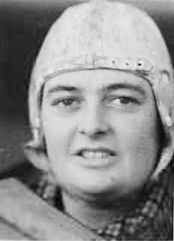
b. 5 Feb 1901 in Elgin, Scotland but living in Maidstone, Kent, owned a 1929 Klemm L25 Ia, G-AATD -
Greenall, Josephine
The Hon Mrs Josephine Greenall 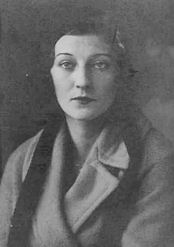
nee Laycock, b. 28 Jun 1908, from Melton Mowbray, owned:
- a 1930 DH.60M Moth, G-AAVE, later sold and re-registered VT-ANS
- a 1931 DH.80A Puss Moth G-ABLC, Sold abroad in 1938
Her husband, the Hon. Edward Greenall, was 2nd Baron Daresbury. -
Grey, Phillips Patrick
Mr Phillips Patrick Grey b. 1 Jul 1903, Bakewell, Matlock, Derbys,
RAF 1924-29
Flying Instructor, de Havilland, Stag Lane, 1929
RAF, 1940-45
d. 29 Apr 1989 - Hindhead, Surrey
Research: thanks to Steve Brew
-
Grey, Spenser Douglas Adair
Lt-Col Spenser Douglas Adair Grey 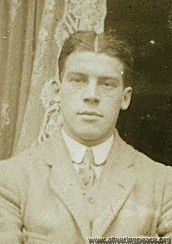
photo: 1911, when a Lieut in the Royal Navy, aged 22
born in Rio de Janeiro; later a Wing Commander; DSM, Order of Leopold of Belgium, Croix de Guerre.
Died in 1937
-
Grierson, John
Mr John Grierson Having joined the RAF but then regretted it, John tried to resign in 1931. However, his resignation being refused, he smuggled himself from where he was stationed in India into his D.H.60G Moth 'Rouge et Noir' (which he had bought from Glen Kidston, and which was painted red one side and - you guessed it - black the other), and flew home, making long hops to avoid R.A.F. aerodromes. "The business was settled in the end without a courtmartial, though not without a period of open arrest".
Next came a solo flight of 9,000 miles round Russia, and then an abortive attempt on the Arctic air route in Rouge et Noir equipped as a seaplane; a nose-over into a choppy sea at Reykjavik put paid to the attempt.
Rebuilt, and fitted with wheels and ski equipment, the little Moth finally carried Mr. Grierson round Eastern Europe in mid-winter.
Then, in 1934, he made a successful westbound Atlantic flight via Iceland in his de Havilland Fox Moth 'Robert Bruce'.
Transferred to Hawker and then Gloster as a test pilot; he was one of four pilots to fly Britain's first jet aircraft, the Gloster/ Whittle E.28/39.
Wing commander after WWII, then a Member of the Council of the Royal Geographical Society.
d. 21 May 1977 in Washington DC, aged 68. He was addressing a symposium at the Smithsonian's Air and Space Museum to mark the 50th anniversary of Lindbergh's transatlantic flight when he was taken ill; he died a few hours later in hospital.
-
Guest, Diana
Miss Diana Guest
Royal Aero Club Certificate 8756 (27 Aug 1929)
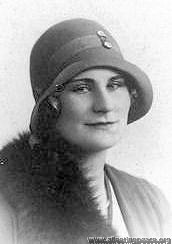
photo: 1929, aged 20
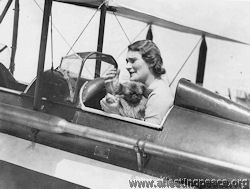
Frederick's daughter; later sculptress Diana Guest Manning. [Mr Manning was one of her 3 husbands].
"I was born and brought up in the country in England. My parents, Amy Phipps and Frederick Guest, met in India and married a year later in London. They settled in a beautiful Queen Anne house near Oakham named Burley on the Hill".
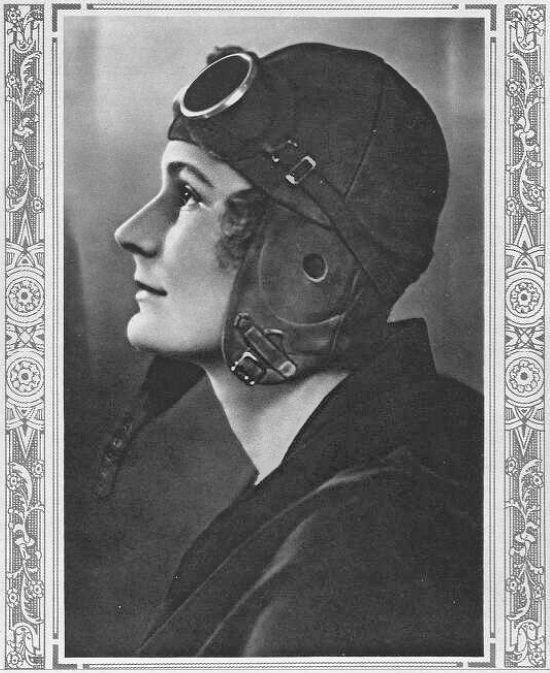
"AN ATALANTA OF THE AIR - MISS DIANA GUEST, CAPTAIN "FREDDIE" GUEST'S PILOT DAUGHTER.
Miss Diana Guest, the young daughter of Captain the Hon. Freddie Guest, P.C., C.B.E., D.S.O., etc., Chairman of the National Flying Services, was born in 1909, and recently made her debut in society. She has also just made her debut in the air, and took her pilot's A certificate recently. She and her father had their flying lessons at the same time, and took their respective tickets simultaneously for although Captain Guest, who was born in 1875, has long been interested in flying, and was Secretary of State for Air from 1921-1922, he was not the holder of a pilot's A certificate. "
The Sketch, 1929
In 1981 "Miss Guest, who divides her time between Paris and Palm Beach, Fla., and whose works have been exhibited in museums around the world, has donated 27 pieces of her sculpture to Old Westbury Gardens".
Diana owned:
- 1929 Hawker Tomtit G-AALL, then
- 1930 DH.80A Puss Moth, G-AAZP, which later became SU-AAC in Egypt and was impressed in WWII as HL537.
d. 1994
-
Guest, Frederick Edward
Capt (later Sqn-Ldr, Air-Comm) the Hon Frederick Edward Guest CBE DSO MP 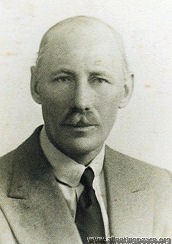 1929, aged 54
1929, aged 54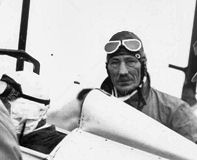
b. 14 June 1875 in London.
'Freddie', Winston Churchill's cousin; Diana's (q.v.) father; Liberal then Conservative politician (Secretary of State for Air in 1920-22, despite the fact that, at the time, he knew "very little about aviation, but it is to his credit that he does not pretend to know").
Died 28 April 1937.
-
Guthrie, Giles Connop MacEacharn
Mr Giles Connop MacEacharn Guthrie 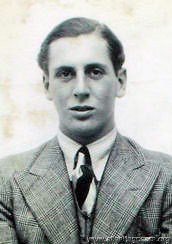 1935, aged 19
1935, aged 19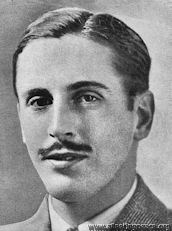 1936
1936Shown here, for comparison, just before, and just after, he grew his moustache.
"Giles Guthrie is the only son of Sir Connop and Lady Guthrie. His enthusiasm for flying has roused his father's active interest in the aviation industry. Only 20 years of age, he is the youngest pilot and the only undergraduate to take part in a long distance air race. For the Johannesburg race, the Cambridge University authorities gave him special leave of absence.
Despite his youth, he is a pilot of considerable experience. The Percival Vega Gull in which Charles Scott and he won the Johannesburg race, first tasted victory in the King's Cup this year. Giles Guthrie then flew as co-pilot with Charles E Gardner .
When Sir Connop decided to enter the machine in the Johannesburg race and chose Charles Scott to fly it, one condition was that Scott should take young Giles with him."
- from the Celebration Dinner programme after the race (October 14th 1936 at Claridge's Hotel).
Had used his Vega Gull for a "good deal of continental touring".
Later Sir Giles, J.P., merchant banker.
Died 1979
-
Haig, Rollo Amyatt Wolseley de Haga
Mr Rollo Amyatt Wolseley de Haga Haig AFC 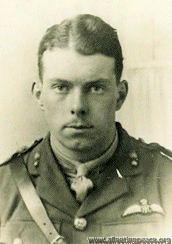 1916, when a captain in the Royal Gloucester Regt, aged 22
1916, when a captain in the Royal Gloucester Regt, aged 22 -
Halse, Stanley Seward
Capt Stanley Seward Halse 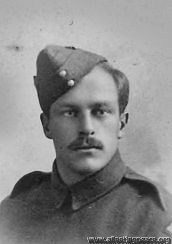 1915, when a Corporal, aged 23
1915, when a Corporal, aged 23 1936, aged 44
1936, aged 44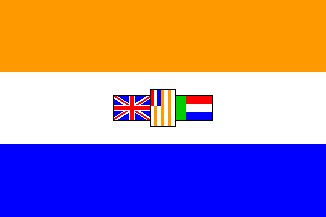 b. 6th December 1892 in Queenstown, South Africa.
b. 6th December 1892 in Queenstown, South Africa.Learnt to fly during WWI, and by 1936 was a flying instructor at the Johannesburg Light Plane Club. Two members (Rex Hull and George Albu) put up the £1,800 required to buy the Mew Gull to enter for the Schlesinger Race. Presumably, that was the last they saw of their money.
Stanley dislocated his elbow in the subsequent crash, and much later found out that three of his vertebrae had telescoped.
-
Hamersley, Harold Alan
Capt Harold Alan Hamersley MC 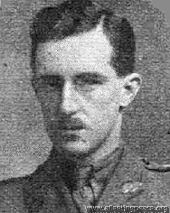 1920
1920b 6 Feb 1896 in Guildford, W Australia.
Studied mechanical engineering before WWI, commonwealth commission then transferred to the RFC in June 1916. Served with 60 Sqn in France, where he was awarded the MC for gallantry in leading patrols. Ended the war with 11 victories, despite his SE.5 being damaged and forced down by German ace Werner Voss in September 1917.
Awarded a permanent RAF commission in 1926, then promoted to Wing Commander in 1938 as Chief Instructor to the London University Air Squadron.
d. 1967
-
Hamilton, Leslie
F/O Leslie Hamilton 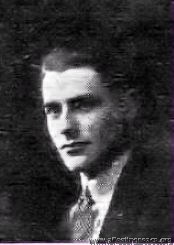
A stunt pilot known as the 'Flying Gypsy'; RAF in WWI (6 victories in Greece) who was Princess Anne Lowenstein-Wortheim's pilot after the war.
He and his friends piled into his Vickers Viking flying-boat G-EBED in 1927 (the same year it was written off, btw) to fly from the Swiss Winter Sports' Season to spend a holiday on the French Riviera." - see the video here: By Air To Anywhere - British Pathé (britishpathe.com)
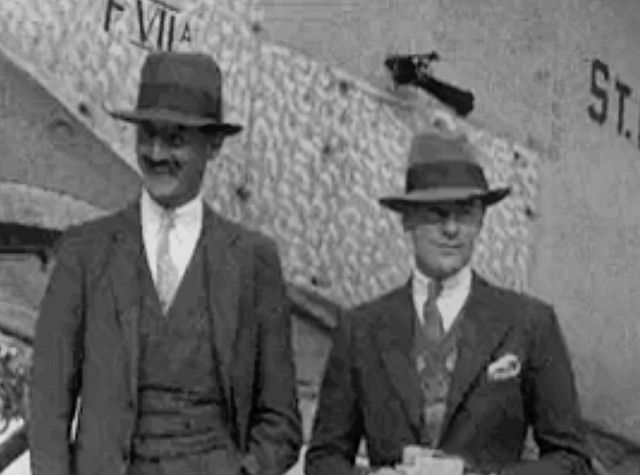
They, together with Fred Minchin (left), were killed when trying to cross the Atlantic from East to West in 1927.
For a video of them and the aeroplane, see the middle bit here: Old Flying Stories - British Pathé (britishpathe.com)
[The rest of it shows Walter Hinchliffe's preparations for a planned similar flight with Charles Levine (qv)].
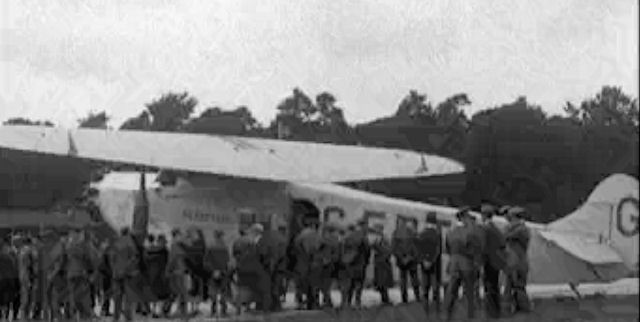
-
Hansen, Michael
Michael Hansen 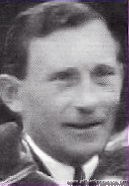
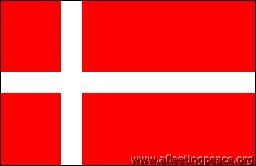 b. 14 January, 1903
b. 14 January, 1903Trained as a pilot in the Danish Army Air Force in 1927. Just before the MacRobertson Race, had competed in an aerobatic championship in Paris.
He flew with mechanic Daniel Jensen, who crouched under the main petrol tank which was fitted instead of the passenger seat. The Desoutter was already over 3 years old by 1934.
----------------
BRITISH AEROPLANES FOR DENMARK
Eight De Havilland Machines for Danish Air Force WITHIN the next few days a fleet of eight de Havilland aeroplanes will leave Harfield aerodrome to fly to Copenhagen in charge of officers of the Danish Air Force. The flight will be under the command of Capt. C. C. Larsen, who will pilot the "odd" machine of the flight, a de Havilland "Dragon." The other seven machines are "Tiger Moths."
The seven " Tiger Moths " will be used for the instruction of Danish pilots in the art of military air manoeuvres, and the equipment of the machines includes all the instruments necessary for "blind flying." Instrument flying is a relatively recent development of military flying training, and Great Britain has, perhaps, done more than any other nation to perfect the equipment. Following the adoption of instrument flying by the British Royal Air Force, nearly all other nations are adding it to their curricula.
The "Dragon" bought by the Danish Air Force is equipped for military purposes, and will also be used for light transport and for aerial survey. All the machines of the batch are fitted with de Havilland "Gipsy Major" engines.
WAITING TO GO : Seven "Tiger Moths" and one "Dragon" at Hatfield, ready to start for Copenhagen. The Danish crews include Capt. C. C. Larsen, Lts. Clausen, Meincke and Rydman, Sgts. Eriksen, Petersen and Hansen, and Machine Officer Petersen. (FLIGHT Photo.)
The Hop to Darwin (by Lord Sempill)
1 WAS just preparing to make a start for Darwin when a D.H. " Moth," which had been very kindly sent over by the Vacuum Oil Co., landed to see if I was all right. Apparently the signal sent from Koepang, although it had reached them, had not Been very clear as to my intention to stop the night at Bathurst Island. They brought my mail which, of course, was mostly from Australia, and contained numerous hospitable invitations. Taking off on the short sea crossing, I arrived at Darwin and received a very kind welcome. The aerodrome has a level grass surface, but is, I understood, liable to become boggy after rain. It is 680 yards from north to south and 1,000 yards from east to west. There is a well-equipped meteorological office and a new shed was just being built. The Danish pilot, Lieut. Hansen, who had put up such a good performance in the MacRobertson race in an old Desoutter, was here on his return journey. He was hurrying home as he had only been given leave from his military duties until December 10. He had done some hard flying on the outward trip, putting in, on some sections of the route, sixteen hours a day.
MARCH 7, 1935 - 'Flight'
A British Entry for International Aerobatic Contest ?
ORGANISED by the newspapers Le Petit Parisien and Air Propagande, an international aerobatic competition, named " Coupe Mondiale d'Acrobatie Ae'rienne," will be held at Vincennes, near Paris, on June 9 and 10. The prizes amount to 300,000 francs, of which 100,000 will be awarded to the winner, 75,000 to the second and 50,000 to the third. It is reported that the following entries have been received:—
Detroyat (France), Al Williams (U.S.A.), Fieseler (Germany), Colombo (Italy), Staniland (Great Britain), Orlinsky (Poland), Hansen (Denmark) and Van Damruch (Belgium).
Judging from what we have seen of Staniland's masterly handling of the " Firefly," he should have little to fear from the aerobatic " aces " of other nations.
FLIGHT, FEBRUARY 15, 1934
The Danish Air Society (Det Danske Luftfartselskab) bought the second last manufactured Desoutter Mk.II in 1931. This aircraft was given the registration OY-DOD. In 1934, this aircraft was sold to lieutenant Michael Hansen, and in the following year to the Nordisk Luftrafik company. In 1938 it was sold to Nordjysk Aero Service, but Michael Hansen bought the aircraft back the same year and used it to fly to Cape Town and in the MacRobertson Air Race
Michael Hansen, 14.1.1903-23.3.1987, Danish pilot. Michael Hansen was trained as a pilot in the Army Air Force troops in 1927. Han achieved a seventh place (out of 20 runners aircraft) with a single-engine FK Desoutter højvinget monoplane in October 1934, together with maskinofficiant Daniel Jensen in the famous air racing Mildenhall (England) - Melbourne (Australia) in competition with some of the world's most talented pilots and fastest planes. It was a trip of no less than 19.895 km.
In 1937 flew he and engineer Aage Rasmussen to Cape Town and return with the same aircraft. The following year he participated in a Danish military søfly (De Havilland DH82A Tiger Moth) as islods on Eigil Knuth Dark Northern Expedition to Northeast Greenland. These flights he described in the books "43.000 km through the air" (1935) and "On the Danish wings in South and North "(1941). He was in a number of years president of The Adventure Club and ended his military career in 1963 as a lieutenant colonel in the Air Force. He is buried in Hørsholm Cemetery.
Literature: Michael Hansen: 43.000 km through the air (1935) and the Danish wings in South and North (1941), Ove Hermansen: Since Hansen flew to Melbourne in '34 - 75 years for Danish participation in the world's largest flykapløb from England to Australia (2009).
Page 8 of 23

